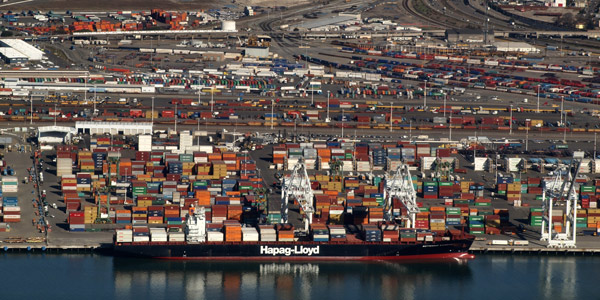By Jason Fordney
FERC on Thursday approved a package of modifications to improve market efficiency developed by CAISO for the Western Energy Imbalance Market (EIM). It also issued several other decisions related to Western states and energy markets.
The commission said the EIM measures would improve efficiency by automating manual processes, providing greater transparency into bilateral transactions and enabling increased participation in both the EIM and CAISO.
The approved changes include automated matching of import/export schedule changes between resources inside and outside the EIM, as well as the ability to automate changes to mirror system resources at intertie scheduling points between CAISO and an EIM entity (ER18-461).
“We find that the automated matching and the automatic mirroring functionalities will result in more efficient EIM market outcomes by automating manual processes that are prone to errors and better maintain balance between resources and load following intertie schedule changes,” FERC said.
The EIM Governing Body approved the package of changes in November, after CAISO had scaled down the initiative based on consultations with stakeholders. (See EIM Governing Body Approves ‘Consolidated’ Initiatives.) The changes also facilitate bilateral settlements and improve the market’s modeling accuracy by expanding the functions of non-generator resources.
CAISO had requested approval of the measures by Feb. 15 to allow for the participation of Powerex and Idaho Power in the EIM on April 4.
Deseret Earns MBR Authority
The commission last week also approved Deseret Generation & Transmission Co-operative’s updated market power analysis for the Northwest region, granting the utility market-based rate authority effective Sept. 12, 2016. Utah-based Deseret became a public utility in 1996 after paying off its debt related to rural utility service (ER16-2186).
Deseret owns the 458-MW Bonanza coal-fired plant and a 25% interest in the 430-MW Hunter 2 coal-fired unit, both in the PacifiCorp balancing authority area.
FERC Approves PG&E/Port of Oakland Agreement
The commission also approved an interconnection agreement between Pacific Gas and Electric and the Port of Oakland but suspended the agreement and subjected it to hearing and settlement judge procedures (ER17-2536).
The port acts a municipal electricity supplier that serves customers located at the Oakland International Airport, which it owns and operates, using PG&E’s transmission and distribution facilities.
Last year, the port submitted an application to convert its Cuthbertson substation from retail service to wholesale interconnection service under PG&E’s transmission owner tariff, but PG&E identified an issue with the tariff based on the substation’s power factor, which it said has to be resolved before it can provide wholesale service.
The port contends that PG&E’s sales for resale to it are subject to FERC jurisdiction and that it is concerned about provisions in the interconnection agreement referring to matters under the jurisdiction of the California Public Utilities Commission. The port argues that PG&E is attempting to “improperly impose” CPUC-jurisdictional exit fees on it and protests language describing the change to wholesale service as a notice of departure from PG&E, subjecting the port to departing load fees.
The port also contests that certain aspects of the agreement are unreasonable and unduly discriminatory compared with other PG&E interconnection agreements.
FERC set a public hearing subject to settlement procedures to be held within 15 days.
GridLiance Rehearing Request Rejected
FERC rejected GridLiance West’s rehearing request contending the commission erred when it failed to approve the company’s proposed use of an actual capital structure related to incentive rates for facilities it sought to acquire from Valley Electric Transmission Association (ER17-706). GridLiance West said the proposed capital structure was comparable to similarly situated transmission companies.
In its order denying rehearing, the commission said it made no final determination regarding the proposed capital structure but “found that its preliminary analysis indicated that the proposed TO Tariff had not been shown to be just and reasonable and raised issues of material fact that could not be resolved on the record before the commission.”
Idaho Commission Complaint Headed to Court?
FERC also declined to act on a petition for enforcement filed by Franklin Energy Storage against the Idaho Public Utilities Commission (EL18-50, et al.). The company argued the state commission had improperly classified its energy storage facilities as solar qualifying facilities, preventing them from being eligible for the PUC’s stated electricity rate under the Public Utility Regulatory Policies Act. The rate is available to non-wind and non-solar QFs of an average capacity of 10 MW or less.
The decision will allow the company to bring an enforcement action against the Idaho commission in the appropriate court, FERC said.





